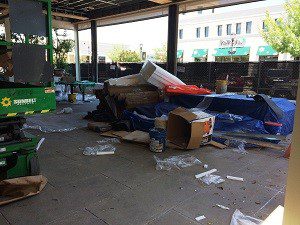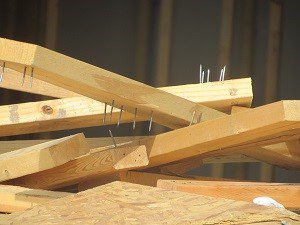According to the U.S. Bureau of Labor Statistics, in recent years, there are more than 800 injuries annually involving floors, walkways, and ground surfaces. OSHA issues hundreds of citations to companies for violations of poor housekeeping and OSHA lists housekeeping on their top 100 most frequently cited issues list. The evidence is clear: workers should do their part to help prevent injuries and incidents by practicing good housekeeping on every job and at every worksite.
Housekeeping should be a regular topic in safety meetings and the job supervisor will have the opportunity at the safety meeting to reinforce company policies on housekeeping and go over the OSHA standards that apply to that job site.

OSHA Construction Standard 1926.25(a) During the course of construction, alteration, or repairs, form and scrap lumber with protruding nails, and all other debris, shall be kept cleared from work areas, passageways, and stairs, in and around buildings or other structures.
1926.25(c): Containers shall be provided for the collection and separation of waste, trash, oily and used rags, and other refuse. Containers used for garbage and other oily, flammable, or hazardous wastes, such as caustics, acids, harmful dusts, etc. shall be equipped with covers. Garbage and other waste shall be disposed of at frequent and regular intervals.

JOB SITE HOUSEKEEPING BEST PRACTICES
Waste and scrap materials must be removed from the immediate work area to avoid creating trip and slip hazards where there is ongoing active work. Work areas must be kept clear as the work progresses; pipe, conduit, rebar and any other material that can roll must be kept away from aisles and walkways to avoid creating trip hazards.
Use designated waste bins, recycle bins, and metal scrap containers. Entry ways, walkways, and sidewalks should be kept free of water, ice, snow, and other potential trip, slip, or fall hazards.
Designated waste bins, recycle bins and metal scrap containers must be used on site. When disposing of waste or materials on a multi-story construction site, chutes or designated drop-off zones must be used to avoid possible fall or struck-by hazards.
1926.252(b)
When debris is dropped through holes in the floor without the use of chutes, the area onto which the material is dropped shall be completely enclosed with barricades not less than 42 inches high and not less than 6 feet back from the projected edge of the opening above. Signs warning of the hazard of falling materials shall be posted at each level. Removal shall not be permitted in this lower area until debris handling ceases above.
If everyone works together continually on housekeeping, it can remain in-check and help prevent unfortunate incidents from occurring.
Until next time…Work Safe, Be Safe!




